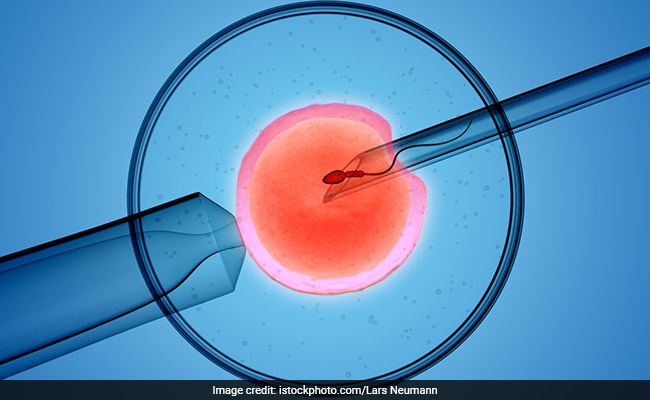There are two types of freezing namely slow freeing and vitrification. The slow freezing is the traditional method of freezing. Know more

A new method, more efficient in these aspects is the technique of Vitrification.
The process of IVF/ ICSI involves production of many eggs which are subsequently fertilized in the incubator. This results in the formation of many embryos. Generally 1- 3 embryos are put back into the womb. The remaining embryos are classified into good and bad embryos based on their appearance on the microscope. The good embryos are frozen and stored in liquid nitrogen containers. The bad embryos are discarded as they cannot withstand the freezing process if the patient does not become pregnant after transfer of the fresh fist cycle embryos. These frozen good embryos can be thawed and replaced back into the womb with a very good chance of pregnancy.
With transfer of three embryos many patients land up having twins and triplets. The multiple pregnancies have problems of miscarriage or premature babies. Hence many units worldwide are putting back one or two embryos instead of the standard practice of 3 embryos and freezing the rest of the extra good embryos.
Also every time one wants to try for a pregnancy with frozen embryos we thaw 3 to 4 embryos at a time and if these embryos withstand the freezing process we put them into the womb. If this fails to yield a pregnancy we try again with a few more frozen embryos. We do this till we either achieve a pregnancy or we finish with all the frozen embryos. In recent times with more efficient ways of freezing the pregnancy rates per freezing attempt has gone up to 30%. Thus with availability of an efficient freezing program the cumulative success rate (success rate in the first fresh cycle plus success rate in the subsequent frozen cycles has gone up to 80% for 3 attempts) with availability of good freezing the Gynecologist also tends to put lesser embryos back thus reducing the problems of twins and triplets.
Having said this let us focus on the actual freezing process. There are two types of freezing namely slow freeing and vitrification. The slow freezing is the traditional method of freezing. It is in existence since the 1980s. In this the temperature of the embryo is slowly lowered down from room temperature down to minus 40 deg centigrade per minute and then the embryos are stored in liquid nitrogen gas whose temperature is minus196. The problems with slow freezing are many. Firstly it needs a machine which takes upto nearly two hours to freeze embryos of one patient. Secondly it is not a very efficient system as many embryos are lost during the thawing process. This in turn hampers the pregnancy rate. It is also not very effective in freezing day 5 mature embryos called Blast cyst.
A new method, more efficient in these aspects is the technique of Vitrification. In vitrification the embryos are mixed with the freezing media and are suddenly plunged into liquid nitrogen. Due to this sudden drop in temperature the entire embryo is turned into a glassy state without the formation of water crystals (which occurs in slow freezing technique and which are known to damage embryo survival).
Vitrification has many advantages. It does not need a freezing machine. It is also a very efficient system and the embryo survival of 8 cells day 3, embryos and 150 cells day 5, blast cyst embryo are better than slow freezing. This results in more number of embryos available for embryo transfer following thawing. This is turn increases the cumulative pregnancy rates in IVF as compared to those with slow freezing. It is also very effective in freezing oocytes and day1 embryo called pronuclear embryos or zygotes.
Other benefits of overall freezing either slow freezing or vitrifoication are as follows: many times the lining of the uterus or womb is not ideal for pregnancy in the first fresh cycle; if this is the case one can freeze all the embryos and transfer them in a subsequent natural cycle when the lining is ideal for implantation. Also sometimes a patient may produce a lot of eggs and embryos with resultant swelling of the ovaries. This is called hyper stimulation syndrome and in such situation it is best to avoid transfer and freeze all the embryos. The frozen embryos are then thawed and transferred in the next cycle
(Dr Hrishikesh Pai, Consultant Gynaecologist & Infertility, Lilavati Hospital, Mumbai, D Y Patil hospital, Navi Mumbai and Fortis hospitals in New Delhi, Gurugram & Chandigarh)
Disclaimer: The opinions expressed within this article are the personal opinions of the author. NDTV is not responsible for the accuracy, completeness, suitability, or validity of any information on this article. All information is provided on an as-is basis. The information, facts or opinions appearing in the article do not reflect the views of NDTV and NDTV does not assume any responsibility or liability for the same.
DoctorNDTV is the one stop site for all your health needs providing the most credible health information, health news and tips with expert advice on healthy living, diet plans, informative videos etc. You can get the most relevant and accurate info you need about health problems like diabetes, cancer, pregnancy, HIV and AIDS, weight loss and many other lifestyle diseases. We have a panel of over 350 experts who help us develop content by giving their valuable inputs and bringing to us the latest in the world of healthcare.














